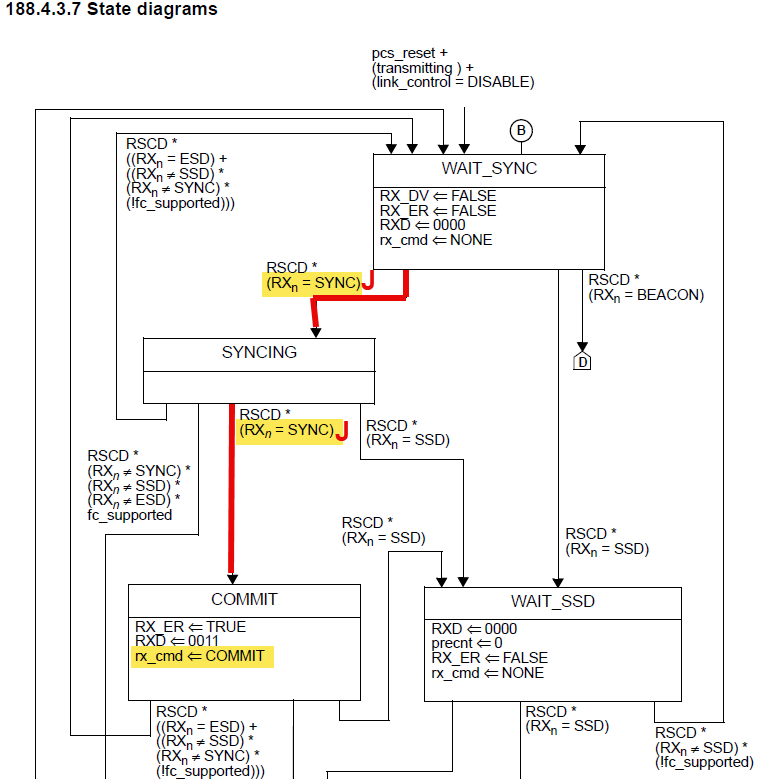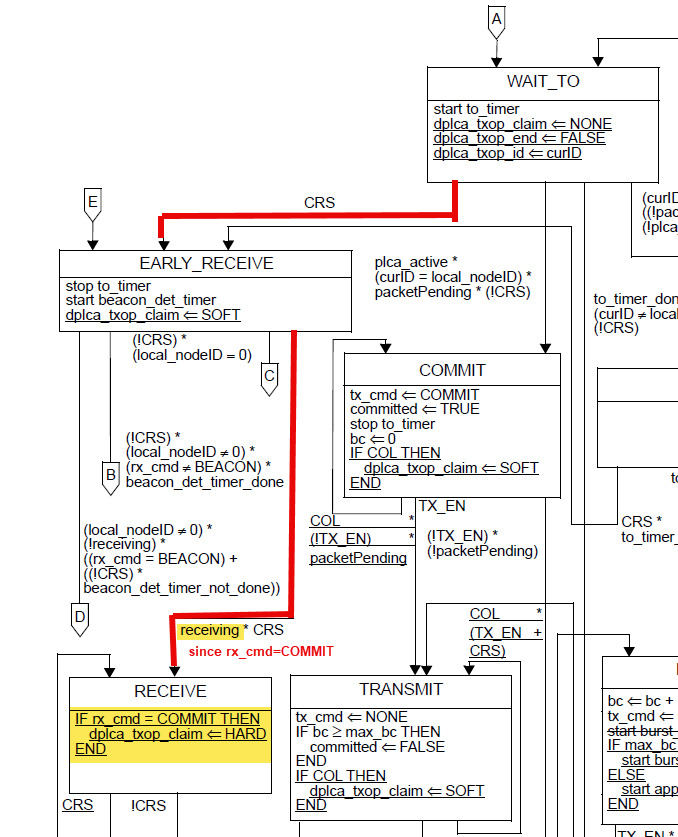Hi Pier,
Can you confirm your DPLCA intentions for HARD Claim?
- A DPLCA node will append 5 COMMIT ‘J’ symbols at the end of every packet.
- Do *not* append 5 COMMIT symbols at the end of the last burst packet. The COMMIT symbols transmitted during the burst timer will always cause a HARD claim.
- COMMIT ‘J’ symbols are transmitted during the burst_timer for 128 bit times (default) until either burst_timer_done, or the MAC finishes its inter-packet gap and starts to transmit.
In either case, there are much more than 5 COMMIT symbols transmitted between burst packets. This will cause a HARD_CLAIMING to be detected.
- Append_commit_timer is specified as 22 bit times. This would be 5 ½ J symbols. Should this really be 20 bit times as with the BEACON?
- Detection of a HARD Claim only requires detection of two COMMIT ‘J’ symbols. This is from the PCS Receive state diagram starting in WAIT_SYNC. First ‘J’ transitions to SYNCING. Second
‘J’ transitions to COMMIT. In COMMIT rx_cmd is assigned COMMIT. In PLCA, ‘receiving’ is defined as (RX_DV = TRUE) + (rx_cmd=COMMIT). Therefore, in the DPLCA control state diagram, this will cause us to transition from EARLY_RECEIVE into RECEIVE. In the RECEIVE
state we assign dplca_txop_ckaim to HARD because rx_cmd=COMMIT. Therefore it appears to me that *any* packet in which the full ‘JJHH’ preamble is detected and decoded will result a HARD claim. This does not seem right.
I think we want to detect more than two ‘J’ symbols appended at the end as a HARD claim.



--
Tim Baggett
Technical Staff Engineer - Applications
---------------------------------------------------------------------------------
Microchip Technology, Inc.
Automotive Information Systems
8601 Ranch Rd 2222, Park Centre, Bldg. 3, Austin, TX 78730
Office: 512-334-8450
Tim.Baggett@xxxxxxxxxxxxx
www.microchip.com
---------------------------------------------------------------------------------
To unsubscribe from the STDS-802-3-SPMD list, click the following link: https://listserv.ieee.org/cgi-bin/wa?SUBED1=STDS-802-3-SPMD&A=1